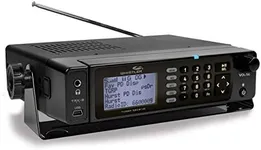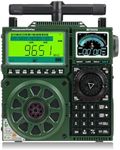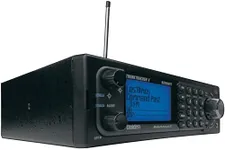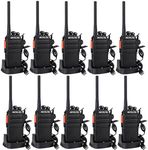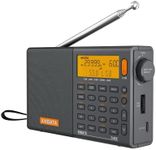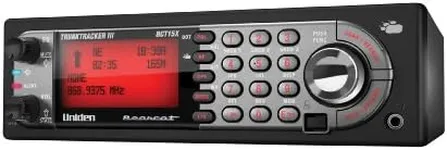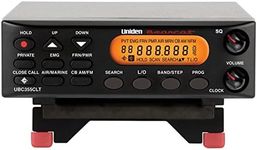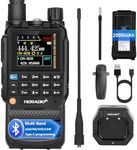Buying Guide for the Best Radio Scanners
Radio scanners are fascinating devices that allow you to listen in on various radio frequencies, including emergency services, air traffic, and more. Choosing the right radio scanner involves understanding your listening needs and matching them with the scanner's capabilities. Whether you're a hobbyist or need a scanner for professional purposes, knowing the key specifications will help you make an informed decision.Frequency CoverageFrequency coverage refers to the range of radio frequencies that a scanner can receive. This is important because different services operate on different frequencies. Scanners can cover a wide range from VHF to UHF bands. If you're interested in listening to local police or fire departments, ensure the scanner covers those specific frequencies. For aviation enthusiasts, a scanner with airband coverage is essential. Consider what you want to listen to and choose a scanner that covers those frequencies.
Channel CapacityChannel capacity is the number of frequencies a scanner can store and monitor simultaneously. This is crucial for users who want to keep track of multiple channels without manually switching between them. Scanners can range from a few hundred to several thousand channels. If you plan to monitor a large number of frequencies, opt for a scanner with higher channel capacity. For casual listening, a lower capacity may suffice.
Scan SpeedScan speed refers to how quickly a scanner can cycle through its stored channels. Faster scan speeds mean you can catch transmissions more efficiently, especially if you're monitoring busy frequencies. Scan speeds are typically measured in channels per second. If you need to monitor fast-paced environments like air traffic control, a higher scan speed is beneficial. For general use, moderate scan speeds are usually adequate.
Digital vs. AnalogDigital vs. analog refers to the type of signals a scanner can receive. Analog scanners are suitable for traditional radio transmissions, while digital scanners can decode more modern digital signals used by many public safety agencies. If your local services have switched to digital communications, you'll need a digital scanner. If they still use analog, an analog scanner will suffice. Consider the type of signals used in your area when choosing.
Trunking CapabilityTrunking capability allows a scanner to follow conversations on trunked radio systems, which are used by many public safety agencies to efficiently manage radio traffic. This is important for listening to complete conversations rather than just parts of them. If you want to monitor police, fire, or other services that use trunking systems, ensure your scanner has this capability. For non-trunked systems, this feature is not necessary.
PortabilityPortability refers to the ease of carrying and using the scanner on the go. Portable scanners are compact and battery-operated, making them ideal for mobile use. Desktop scanners are larger and typically require a power outlet, suitable for stationary use. If you plan to use your scanner while traveling or outdoors, a portable model is preferable. For home or office use, a desktop scanner might be more appropriate.
